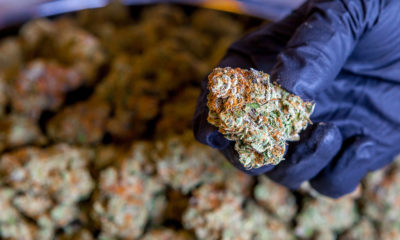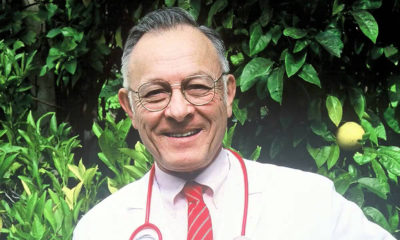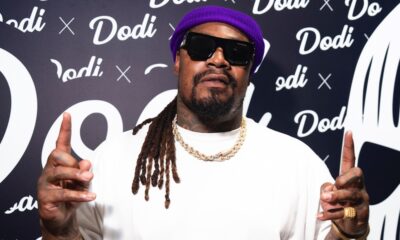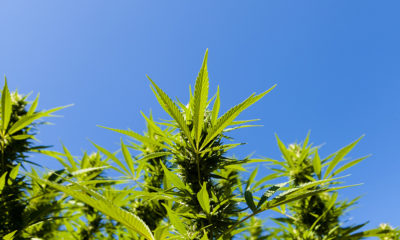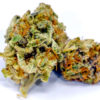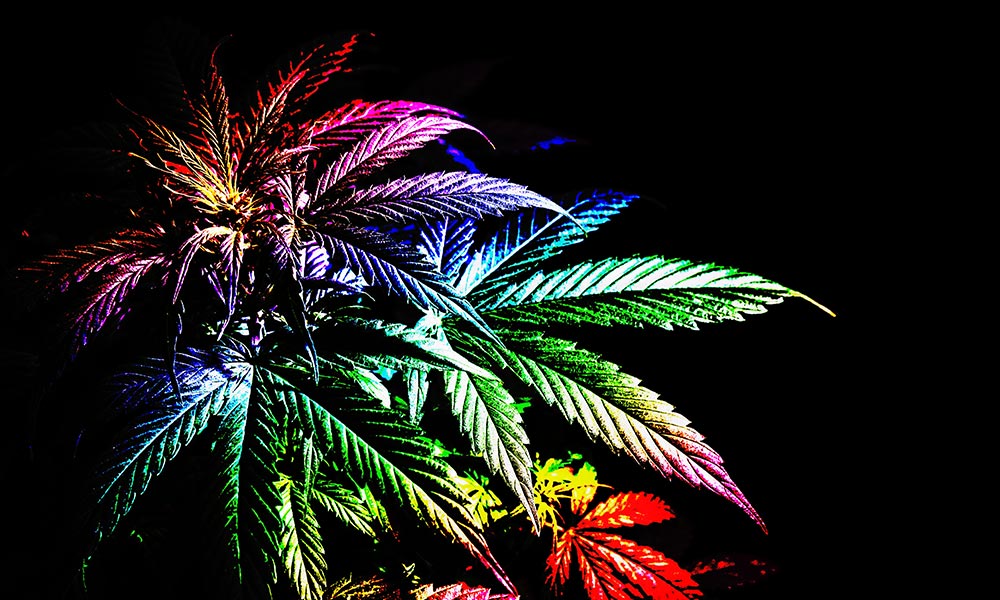
Culture
Cannabis’ Undeniable LGBTQ+ Connections Run Deep
As Pride Month draws to a close, we honor Dennis Peron and the other legends from California’s cannabis and LGBTQ+ communities.
Cannabis and Proposition 215—the Compassionate Use Act of 1996—are intimately intertwined with the LGBTQ+ community. The reward was born from the guts of the AIDS epidemic of the 1980s and ’90s, a public health crisis in full view of an indifferent government. The moment compelled action. Amidst illness, the community found health. Amidst division, it found unity with voters at the ballot. Prop 215 protects a series of rights to possess, use, obtain and cultivate marijuana for medical purposes with a doctor’s approval, with transportation—the 5th right—added on appeal in 1997.
Let’s take it back to where it all started.
Beginnings in the Castro: A Taste of Freedom
Dennis Peron, a gay hippy, returned to the US from Vietnam with two pounds of weed in his duffel bag. With such precious cargo, he established his home in San Francisco’s fabled Castro Street as a “Grand Central Station” gathering place for quality cannabis and mind-expanding psychedelics—magic mushrooms and LSD—which were presumed safe and lean after thousands of uses. Locally grown cannabis was the standard. An aura of Mother Nature permeated the space, plants hanging from ceilings and walls, showcasing a healthy herbal way of life.
This grew into Island Restaurant in the Castro (food downstairs, herb upstairs). Taking place in a marginalized community, the spot was allowed to flourish for a time. Marijuana was so central to life in the Castro—a weave of medical and sexual freedom—that it mushroomed into a full-fledged movement.
California passed a major reform, the Moscone Privacy Act, reducing an ounce to a misdemeanor from a felony. Imagination was thriving. I vividly remember one community march for Prop W in 1978 led by the artist’s teenage daughter on roller skates. Brownie Mary was posting flyers of a cartoon of herself, eyes twinkling, holding a tray of steaming brownies with a way to get in touch with her. Every week, she baked hundreds of brownies out of her tiny apartment kitchen, using donated leaf from local growers. When Mary ran out of leaf, she and I would team up and I’d go to the country for pounds.
Even without much money, freedom was real and within reach.
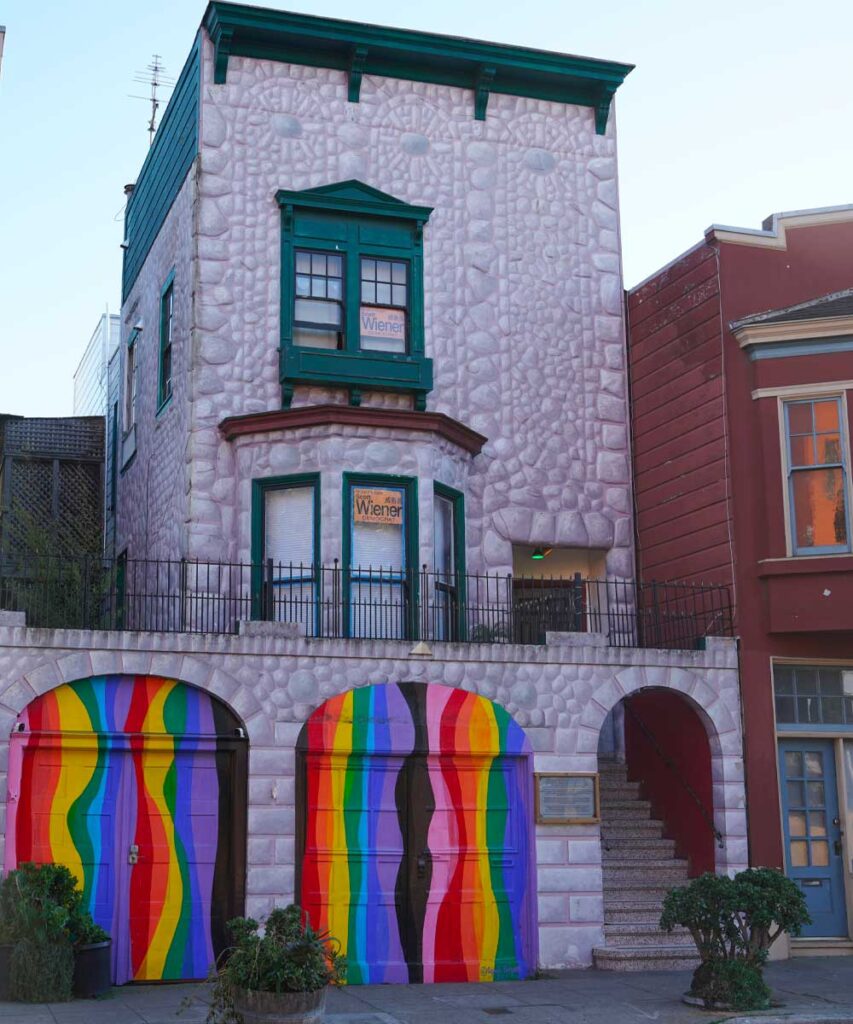
Assassination Aftermath
In the first week in November 1978, San Francisco’s Prop W passed by 58% with endorsements from Mayor George Moscone and Supervisor Harvey Milk, who were friends with Peron and the cannabis community.
We celebrated the victory.
But not for long.
Three weeks later, homophobic cop, Dan White, walked into San Francisco City Hall and assassinated both Moscone and Milk, two wildly popular public officials. “White Night” riots broke out. Police cars became fair game. An outpouring of anger and grief spilled over the edges at the insanity defense of the jive twinkie, used to escape conviction at jury trial. San Francisco absorbed the blows of outrage and extreme sadness. The lives of two close friends were snuffed out due to their belief in freedom. Dan White eventually killed himself.
Later, Peron told me he believed the 58% success of the legalization initiative ultimately caused the assassinations.
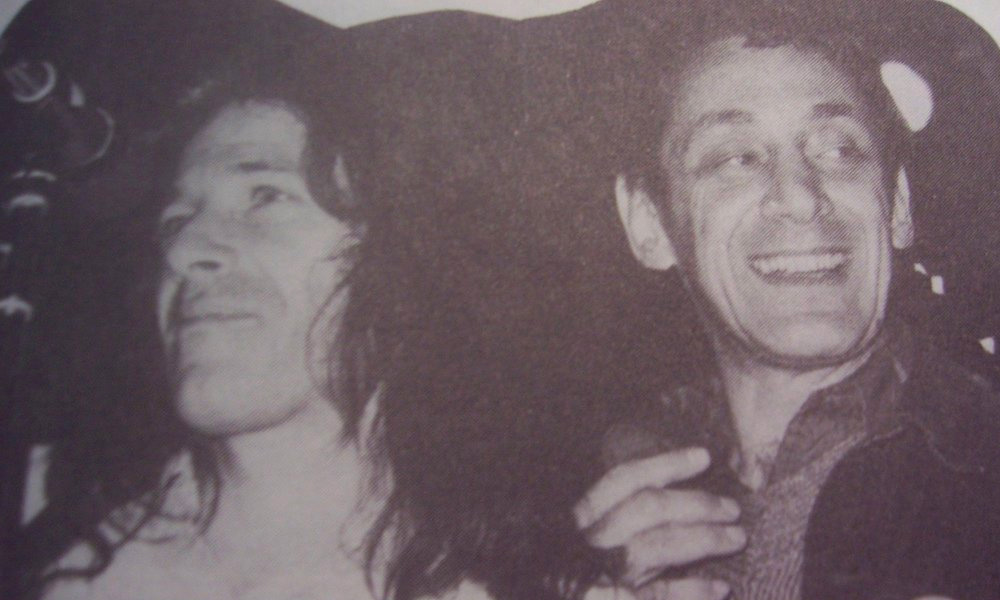
Arrival of AIDS
The AIDS crisis of the 1980s and ’90s entered the LGBTQ+ community as an intruder. It hit gay men the hardest, causing healthy young adults to waste away from previously unknown widespread immune deficiencies and cancers thought to have been spread by unprotected sex, shared needles and blood.
AIDS buyers’ clubs formed, seeking alternative medicines and suppressed information. The government offered nothing beyond AZT-type toxins on already compromised immune systems. This produced a generation of health-conscious activists who took it upon themselves to fill the knowledge void. Shanti volunteers delivered medicine to those in need.
Brownie Mary was one of them.
What had started as a modest living for Mary in the 1970s became a volunteer labor of love in the subsequent decades. Every week for years, Ward 86 at San Francisco General became a hotbed of happiness when Brownie Mary arrived—an angel of mercy driving the mothership—with dozens of home-baked brownies in her goody bag. None of the staff nurses or doctors ever turned her in before Prop 215 became law. They protected and encouraged her presence to lift spirits (and appetites).
Dr. Donald Abrams, one of the original clinicians/investigators to recognize and define early AIDS-related conditions, gave Mary the green light. He treated thousands of patients over those years, all while applying for grants to research cannabis and AIDS, so he knew what AIDS patients needed.
Brownie Mary was the beloved centerpiece of the Prop 215 trio that achieved the vote for medical marijuana: Mary as Mother, Peron as Father, and Dr. Tod H. Mikuriya as Grandfather—an elder cannabis statesman legitimizing the knowledge.
The public moved at lightning speed to get behind medical purposes, polling at 92% support in a single generation from 1996 to 2019. Whereas California lawmakers took nearly two decades to introduce regulatory legislation for medical purposes in 2015—and only then because Prop 64 loomed large on the 2016 ballot.
The time to decide had arrived.
The California State Legislature passed a second stage Prop 215 law—SB420 in 2014—for “enhanced access to medical marijuana through collective cooperative cultivation” under the California Attorney General’s ‘closed loop guidelines’, now sunsetted, killing a collective way of life for thousands of small family farms.
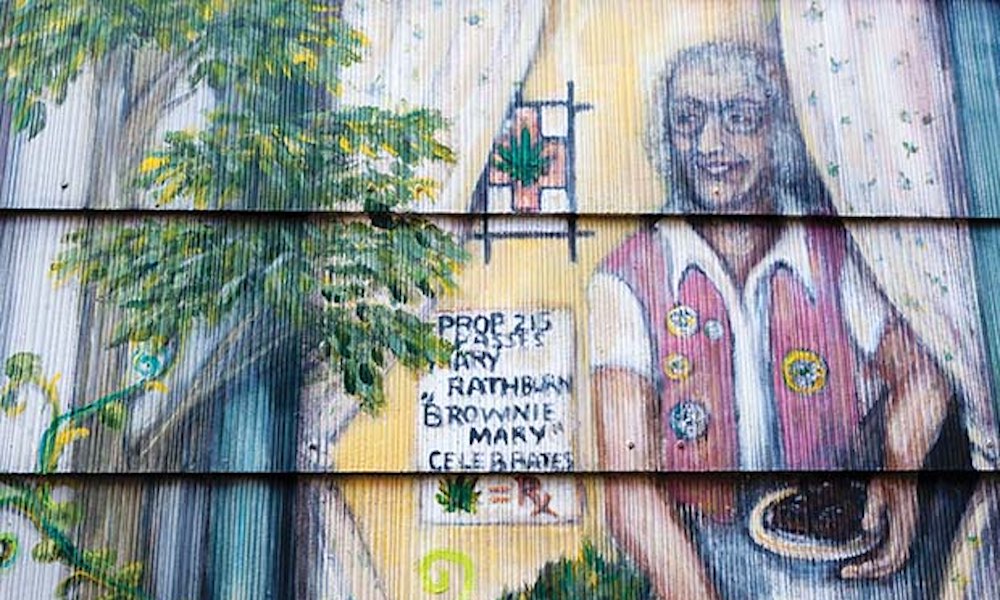
Evolution of the LGBTQ+ Community
Through the 1980s, the community closed ranks with empathetic lesbians nurturing their brothers. This was the beginning of recognition among lesbians that the term ‘gay’ to cover all same-sex relations was self-effacing. Gay women were increasingly invisible as the epidemic became increasingly visible, with the term generally associated with males and illness, focused on gay men at the center of the public health crisis—not a healthy image for acceptance of same-sex relations.
This caused the lesbian dissent, which ultimately led to the broader, more inclusive LGBTQ+ identity, rather than simply ‘gay’—from exclusively gay, to lesbian and gay, to bi—i.e., a spectrum of sexuality, exclusively one or the other on the ends with the middle embracing either or both. The Q was for Questioning or Queer and other sexual freedom issues.
Trans-inclusion took a rockier path. One conference I attended focused on Beth Elliot, considered by many to be ‘not a real woman,’ who, therefore, shouldn’t be there. After a discussion about whether she was pre-op or post-op, the main thing seemed to be a desire for privacy in an atmosphere of trust with men—any men—being unwelcome, as a lesbian community base was being built.
Resistance to trans inclusion collapses slowly.
Chelsea Manning is the most infamous impactful principled example. After years under tortuous prison conditions for releasing war crimes documents, Manning is back in prison for refusing to testify against Wikileaks or Assange. That saw the 2017 Pride Board, with corporate sponsors, rescind its invitation to Manning to lead the Parade. Angela Davis reveals that murders of trans people are disproportionately high among oppressed people.
Cannabis Buyers’ Club Infancy
The public was leading the learning curve. San Francisco’s Hemp Preparations Initiative passed locally in 1991 by an unprecedented 82%. Fears of public condemnation didn’t materialize—voter support was over the top. This spurred momentum for putting compassionate use in the hands of CA voters.
This level of public support helped spark CHAMP (Cannabis Helps Alleviate Medical Problems), the first cannabis buyers’ club at Church and Market, a membership space for socializing in an atmosphere of healing and trust, where marijuana was abundant with a doctor’s approval despite being federally illegal. They operated out of a gigantic two-story room above a bar across from Safeway, during constant mass traffic. It was no secret. As early as ‘1992, San Franciscans saw lines 20 deep, waiting for their turn to get in—20 steps to the second floor without an elevator.
Traffic was brisk; appreciation was high.
Then came the raid and prosecution of CHAMP leaders, ending in an acquittal at trial with testimony from San Francisco District Attorney Terence Hallinan that he approved the grow. Stalwarts such as Ken Hayes prevailed and kept it alive.
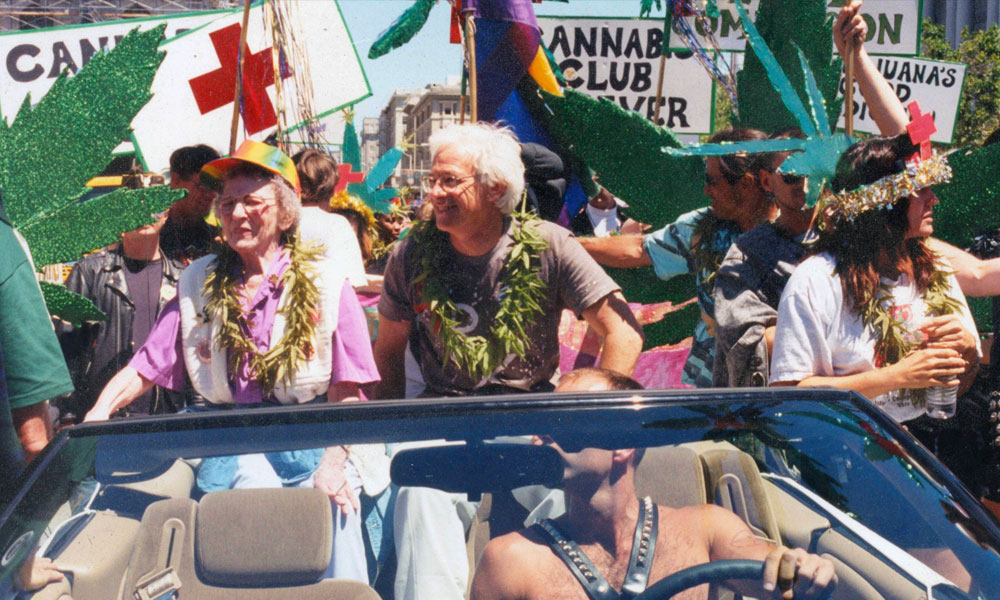
Turn to Initiatives
CHAMP’s success led to Dennis Peron’s brainchild—a full-fledged cannabis buyers’ club in a mammoth three-story building on Market Street in the heart of downtown San Francisco. It served as a private membership of patients and caregivers, providing quality medical cannabis and a healing space to socialize. Local musicians performed. Peron paid the rent from sales of bud cultivated by members. It was all about flower as oils and vapes had not evolved.
The first floor was for intake; the second had tables and low lights for eating, toking and socializing; the third was the bud bar. There were hanging plants and bowls of organic oranges. Everyone had a doctor’s approval or could sign up for one. The atmosphere was welcoming, the membership diverse.
AIDS patients were focused on signing up a half-million registered voters to make the 1996 ballot. Halfway through the signature drive, they realized they needed professional help to qualify. Previously resistant moderates were willing to fund professionals for the remaining quarter-million signatures once they realized it was close enough. They also wanted control of the campaign—especially the voter handbook ballot argument and rebuttal.
The two perspectives clashed—professionals v. hippies, moderates v. radicals. The point of agreement was funding the remaining signatures. They did that and then agreed to go their separate ways. Moderates set up a Southern California office, submitting their own ballot argument, while the ‘Peronistas’ submitted their ballot argument from headquarters in Northern California.
California’s Secretary of State chose the moderates’ ballot argument and rebuttal as the best representation of the issue. But the ecstatic election night spotlight was on Market Street, where it all began.
The separation strategy was an effective division of differences, allowing all viewpoints, allocating functions and reducing infighting. Voters affirmed medical cannabis by 56%. 82 years of prohibition ended with ‘rights’ for ‘medical purposes’ that had once been crimes. The real change emerged from the life-and-death public health emergency of the AIDS epidemic in LGBTQ+ communities that suffered the most.
To the evident credit of the LGBTQ+ community, sparked by Peron’s insistence on voters as allies, Prop 215 led to a balance. All the negatives of the AIDS epidemic produced a prohibition breakthrough for society, with access to medical cannabis, and people’s lives were changed for the better.
Coming out as a hip bi-feminist cannabis activist in the late 1960s and early 1970s shaped my connection to the LGBTQ+ community. The Castro was a home base. I discovered an abundance of herb and open-mindedness about mind-expanding psychedelics with no tolerance for hard drugs.
What you don’t do is as important as what you do do.
I got involved in the California Marijuana Initiative (CMI) 1972, from day one. I also co-founded Grassroots/Election Action, a petitioners’ co-op in the ’80s, coordinating multiple peace and justice initiatives on the SF ballot from our office in the Mission District, paying per signature, winning five out of eight. That included the Apartheid Consumer Boycott, aimed at companies doing business with South Africa. The Nuclear Free Zone, stopping Battleship Missouri’s homeporting, based on no funding for nuclear military installations. Public Property Voting Rights, requiring a public vote for giveaways of public property. And Hemp Preparations, a grassroots collaboration with Peron for signatures.
I sought refuge in the Castro through street vending, selling bumper stickers, buttons, books, magazines, magnets and other political literature—all First Amendment-protected messages—to help get through a series of cannabis cases and convictions in the 1990s.
The community broadly supported my constitutional challenge to the marijuana laws for lack of medical access—as unreasonable seizures of medicine, unequal compared to other medicines and cruel punishment of a medical act—when no one else did. They understood that some things are worth fighting for.
My medical marijuana prosecutions encompassed 10 busts in 11 years, with convictions and jail in three counties. P. v Trippet granted three things on appeal for carrying two pounds of medical leaf for migraine headaches I experienced from the age of six:
1. Medical cannabis transportation = ‘implicit right’ to carry medicine you can legally possess (which has been extended to cultivation).
2. Quantity standard = amount ‘reasonably related’ to your medical condition—ruled in 1997, affirmed 2010 (P. v Kelly).
3. Retroactivity to apply to pre-1996 convictions.
I was vending at my Castro corner when Peron brought me the news of my transportation precedent. BAR covered my case. I felt nurtured by the spirit of community… and we won.
There is a connection.
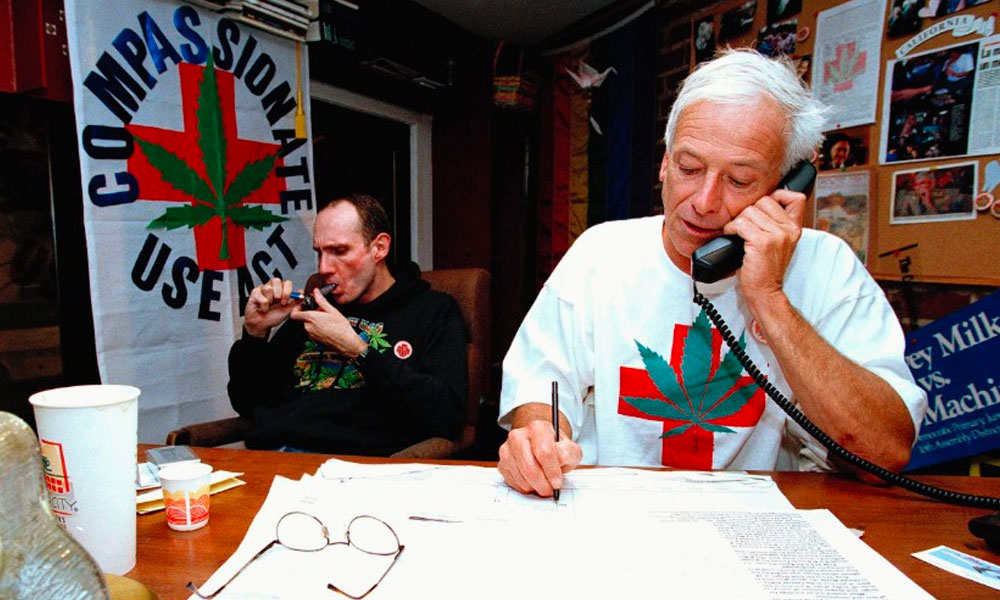
Stonewall Gave Birth to Equality
Not so long ago, the New York Police Department publicly apologized for its violent attack on Stonewall Inn more than half a century ago—it shows the LGBTQ+ movement was born fighting back. The Stonewall riots marked the birth of the modern gay movement, representing all sexual orientations and gender identities, inclusively, implicitly, without prejudice, including lesbian, gay, bi, drag, cross-dressing and transgender.
But the evolution wasn’t delineated or predestined.
It grew from the culture of the era. The complex compelling nature of sexual freedom. Disavowing restrictions society imposed on freedom of choice in same-sex relations and access to abortion. Grace Slick defied Puritan standards by taking off her top while performing “White Rabbit”—her song about LSD—at San Francisco’s 1967 Human Be-In.
A peace, sex and drugs counterculture were coming of age and connecting it all—youth, feminism, freedom to love and psychedelic rock revolution, amidst anti-war, anti-draft sentiment for peace and justice. In summary: peace, sexual freedom, medical freedom, access to kind drugs and great music.
LSD was outlawed to end the freedom of the counterculture.
Within the LGBTQ+ community, lesbians broke the mold, demanded recognition, rejected the narrow stereotype of ‘gay’ as the universal icon to represent the whole community and changed the order in LGBTQ+, reversing gay dominance, encouraging female emergence—balancing the equality scale.
I’ll welcome the day when initials don’t represent separate identities because sexual freedom and respectful relations are universal values.
There’ll come a day when marijuana equality is as accepted as marriage equality. The LGBTQ+ community uniquely intertwines cannabis with medical and sexual freedom, at the intersection where both outlaw groupings—pushed to the margins and shadows where polite society can ignore their concerns—turn those negatives into benefits for society. All of society.
There’s a strong barrier to progress on the issue of Trans & the power it is generating as a force and factor within GLBT & the world at large without being educated about what’s at stake for transgender people and what the laws reflect (over 75 new local laws this year alone with 500 pending, all on the issues of LGBTQ+). There is no education on the meaning of Trans or distinctions between transvestite and transsexual inside or outside the sexual freedom movement. It is largely a void.
Human Rights Campaign has declared a State of Emergency for LGBTQ+, showing it considers the current situation to be dire in need of intervention. We need to keep clarifying distinctions and contradictions which will make it easier to communicate with the American people and win hearts and minds on a touchy subject, as we did with ‘marijuana for medical purposes’ over the past decades. We need to strengthen our support for gender-affirming care services and abortion providers. And we need to help create policies that will lead the nation toward compassion and protection, not punishment and prohibition.





